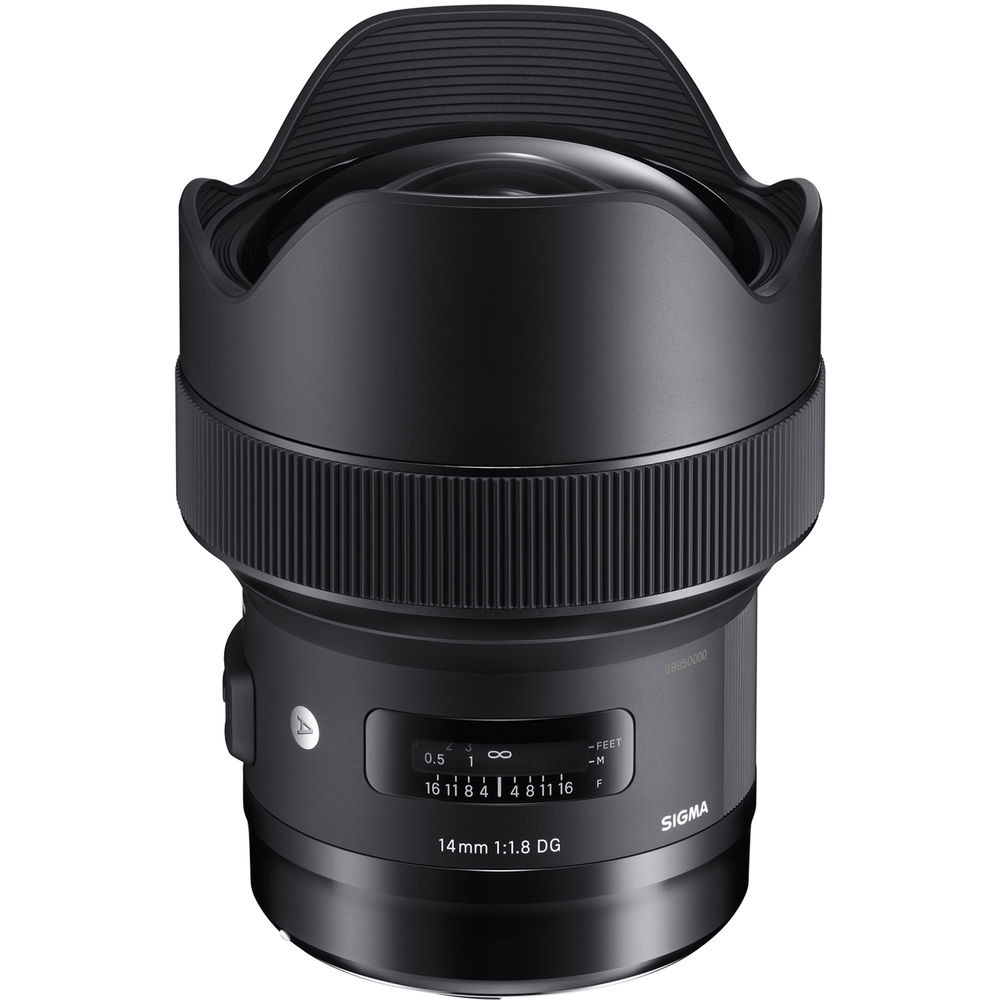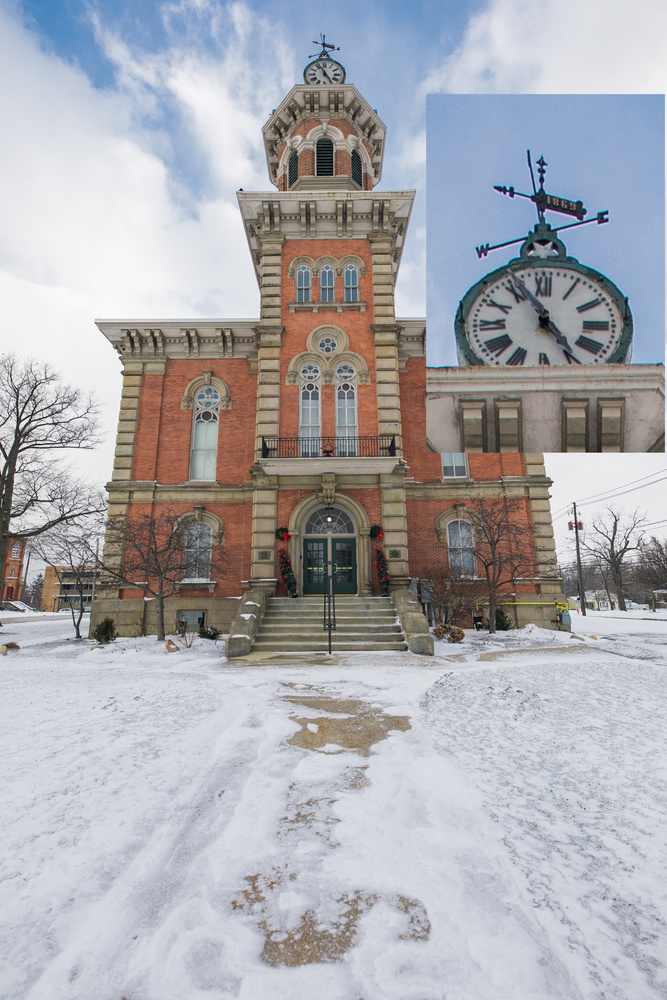Sigma 14mm F18 Dg Hsm Art Sharpness Chart Compare to Rokinon
Every once in a while, a lens comes along that truly breaks new basis for one reason or another. Such is the Sigma 14mm f/1.8 DG HSM Art, which has an aperture over a stop faster than its competitors and is the fastest full-frame lens under 20mm. Of class, extreme lenses often take compromises of some sort, so how does this one perform? In short, extremely well. Check out our full review. The Sigma Art series has churned out some awesome lenses that have really shaken upwardly both the lens market and how photographers view third-political party lenses in full general. Along with some staple lenses have been so more unique offerings, and the 14mm f/1.eight DG HSM Art falls squarely in the second camp, offering an insanely wide aperture for its focal length. This should take astrophotographers and mural shooters who like to shoot at night drooling, as the increased aperture means lowers ISOs and increased detail, particularly important as there'south a time limit on exposures of the dark sky before star trails become visible due to the rotation of the Earth (unless one is using an equatorial mountain). The lens is also intriguing for event photographers and anyone else who could utilise a loftier-quality ultra-wide-angle lens, including architectural photographers, environmental portraitists, and more. Build quality is of a typical Art series level. The barrel is made of TSC (thermally stable composite) and feels solid. The focus ring is big and well damped with a proficient grip, lending itself to precision turns. The lens is atmospheric condition-sealed, and in my experience, information technology did perfectly well with some light snowfall and rain. Like the residuum of the Art series, it's a good looking lens with the smooth black finish giving information technology a modern, elegant look. The distance scale is helpful if you're zone-focusing or looking for the hyperfocal altitude, especially since you'll often find yourself manually focusing in a lot of situations where you'd use this lens. It'southward a heavy lens, coming in at 2.6 lbs (1,170 g), but that'southward the price yous pay for that crazy discontinuity. That being said, the lens balances well and isn't front end-heavy, so aside from the sheer bulk, it handles well. The hood is not-removable, just with that big, convex front end element, I adopt it that way. As well annotation that because of the front element'southward shape, screw-on filters cannot exist used. This is far and away the weakest office of the lens. While yous may not retrieve you need to worry about autofocus functioning too much at this wide a focal length, that maximum aperture does create a noticeably finite depth of field, peculiarly at closer focal distances (see below). Simply put, it's not great. Focusing speed is quick and accuracy is quite expert when information technology finds information technology, just consistency is a definite weak bespeak. It does use Sigma's very quiet and fast HSM (Hypersonic motor), which should be pleasing for video shooters. Notwithstanding, I found the lens noticeably missing in some rather like shooting fish in a barrel scenarios that shouldn't accept challenged it and in which were I working, I would expect information technology to perform without question. Performance was especially bad in peripheral autofocus points on my 5D Marker IV, which has a very strong AF system. What'southward more frustrating is that the trouble was mostly i of consistency, which cannot exist remedied by an AFMA: in a test where I put the autofocus point on a tree well-nigh 10 feet away with a light background (at an exposure of 1/100 southward at f/1.8 and ISO 100), the lens would oscillate between nailing the focus and ending up 20 feet behind the tree with no rhyme or reason. The one slice of skilful news is that near situations you might observe yourself using such a lens in generally permit the time for or even require manual focusing. In fact, astro, landscape, and architectural photographers can all wait past this. If yous're considering this lens for events work, do keep this in listen, yet. In that location's too scale via the Sigma USB adapter, but I found the error to be one of low precision, non low accuracy, significant an AFMA adustment isn't going to help. Your beginning thought might be: "bokeh? What is he talking almost?" Yep, it's a 14mm lens, simply that maximum discontinuity does make information technology possible to throw backgrounds reasonably out of focus if yous keep the subject close to the lens and the background far away. The effect diminished chop-chop with distance, though, and then information technology'south best done at or near the minimum focusing distance of the lens. To see what I mean, notice how the tree and lights modify with just a few inches of movement (both taken at f/1.8): 1/eighty, f/one.8, ISO 800 Equally yous tin see, the upshot diminishes very quickly with just a little more subject distance, but nevertheless, the bokeh that is in that location is nice: it's shine and the rounded nine-bract diaphragm makes pleasing renderings of lite sources. Some Sigma Art lens are known for having slightly crispy or busy bokeh, simply with the 14mm, everything was buttery smooth. Flare control is almost every bit adept as you can ask for. The instance below is the worst flare I ever got in my time with the lens; you lot can see it on the horse's blanket near the neck (it doesn't become much worse even if yous open upwardly the aperture). Also annotation that the ix-bract aperture creates 18-point sun stars. Vignetting is quite skilful considering this is such an farthermost aperture for the focal length. It's certainly noticeable, simply it doesn't bother me, equally I think it frames the subject nicely without existence over the tiptop; nonetheless, you lot tin can easily clean it up in Lightroom. I'll put it this way: if y'all finish the lens down to the maximum discontinuity of all its competitors (f/ii.viii), the vignetting is comparable or ameliorate than them. With a minimum focusing of 10.6", which equates to a maximum magnification of 0.10x, this lens isn't going to win any awards for its macro capabilities (indeed, well-nigh ultra-wide-bending lenses sit around 0.15-0.20x), but it'south rare if ever you'll discover yourself in a situation in which you're using a 14mm lens and wishing for a shorter MFD. It didn't bother me in exercise. I could blabber on for paragraphs about the specifics of it, merely let me sum it up in 1 word: wow. This lens delivers. Images are abrupt, contrasty, and have smashing bokeh, amend than what I've seen out of another Art lenses. What's the fun in ownership a crazy aperture lens if the image quality isn't there when you shoot it broad open up? The good news is that it's definitely at that place. Time and once more, I was astounded at how precipitous the lens is wide open, made even more than impressive by the fact that its aperture is so farthermost relative to its competitors. This is a game-changer for landscape, events, wedding, and street photographers, as you can now shoot in far lower lite levels with high image quality. This means lower ISOs and/or faster shutter speeds, always two good options to have available to you. 1250, f/one.8, ISO 100 Sharpness improves noticeably when you lot finish downwardly even a third of finish, continuing to improve to pin-sharp levels. Contrast is quite expert too, typical of an Art series lens. For an ultra-wide-angle lens with a wide aperture, corner sharpness is very expert, becoming excellent every bit you cease downward. Nonetheless, information technology was good enough broad open that I was never bothered by it, which is more than than I tin can say about some other ultra-wide-angle glass. Combined with the good vignette performance, it creates edge-to-border paradigm quality that should please near discerning viewers. Chromatic abnormality is very well controlled: information technology never stretches wider than a few pixels if it appears at all and is hands corrected with one click in Lightroom. It'southward not something I would worry about with this lens. Barrel distortion is nowadays, but I would generally say unless you're shooting brick walls or specifically looking for it, you're unlikely to notice it. Considering this lens screams "astrophotography," this is the topic a lot of you are probably waiting to hear about. A wide-aperture, wide-angle lens isn't much utilise for astrophotography if all the stars have wings on them and aren't rendered as point sources. But put, coma is not perfect, but it'due south very proficient on the Sigma. Cheque out the two shots below: Every bit y'all tin can see, stars in the corners do bear witness some coma, but the outcome is not extreme and generally limited to the farthermost corners. It's not the best operation I've seen, simply it's more than than skillful enough to make the lens useable for all but the nigh discerning astro and mural photographers. I was quite pleased with the consequence. This is a tough question. Seeing as this is a lens I would manually focus all the fourth dimension (and that I don't particularly trust its autofocus anyway), the question becomes if I'1000 willing to pay over five times as much over something similar the splendid Rokinon 14mm f/2.eight for a small-scale increase in image quality and the massive increase in aperture. In fairness, the Sigma is actually priced well below the Canon EF 14mm f/ii.8L II USM, which maxes out at f/2.8, so that's not to imply it'south overpriced. It's more a question of demand. If you're an astrophotographer or a landscape lensman doing a lot of nighttime work, I would say that it'due south absolutely a worthwhile investment that you'll be glad yous made. If you're someone like an events lensman, the question is a picayune trickier, as y'all'll need to consider the mediocre autofocus functioning and how often you need to shoot that broad. For me, I eventually decided that as much fun as this lens is (and let me emphasize that it's one of the funnest lenses I've ever shot with), the percentage of times I need f/1.8 out of an ultra-wide-angle lens versus f/2.viii wasn't enough to justify purchasing it. It's a very personal decision, though, and you may experience differently. You can purchase the Sigma 14mm f/i.eight DG HSM Art here.Build Quality and Ergonomics

Autofocus
Bokeh, Flare, Aberrations, and Distortion
Vignetting, MFD
Image Quality
Overview
What You're Really Hither For: Quality at f/1.eight
Sharpness and Contrast
Aberrations and Distortion

Blackout
Would I Buy It?
What I Liked
What I Didn't Like
Purchase
Source: https://fstoppers.com/originals/crazy-wide-crazy-fast-fstoppers-reviews-sigma-14mm-f18-dg-hsm-art-lens-210898








0 Response to "Sigma 14mm F18 Dg Hsm Art Sharpness Chart Compare to Rokinon"
Postar um comentário